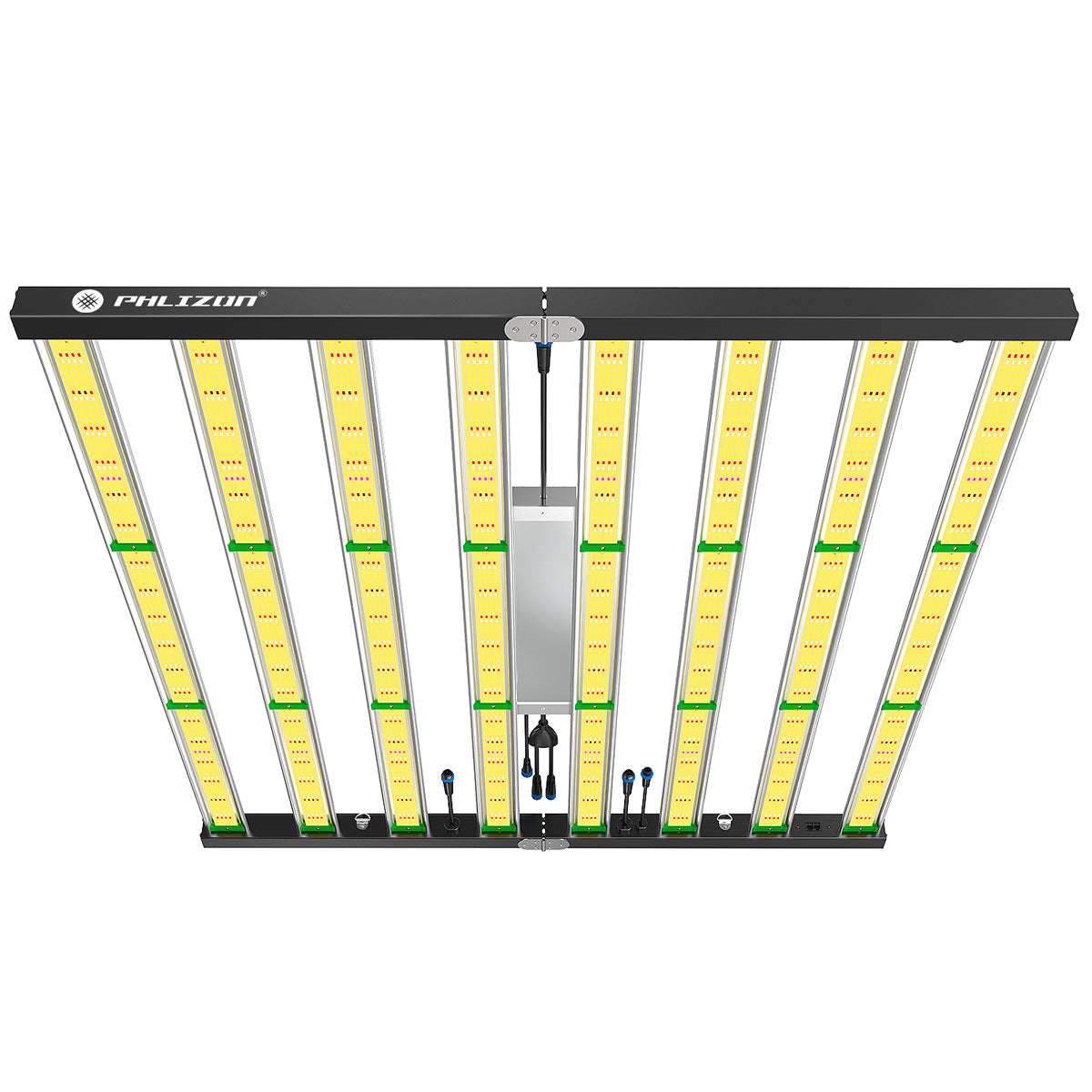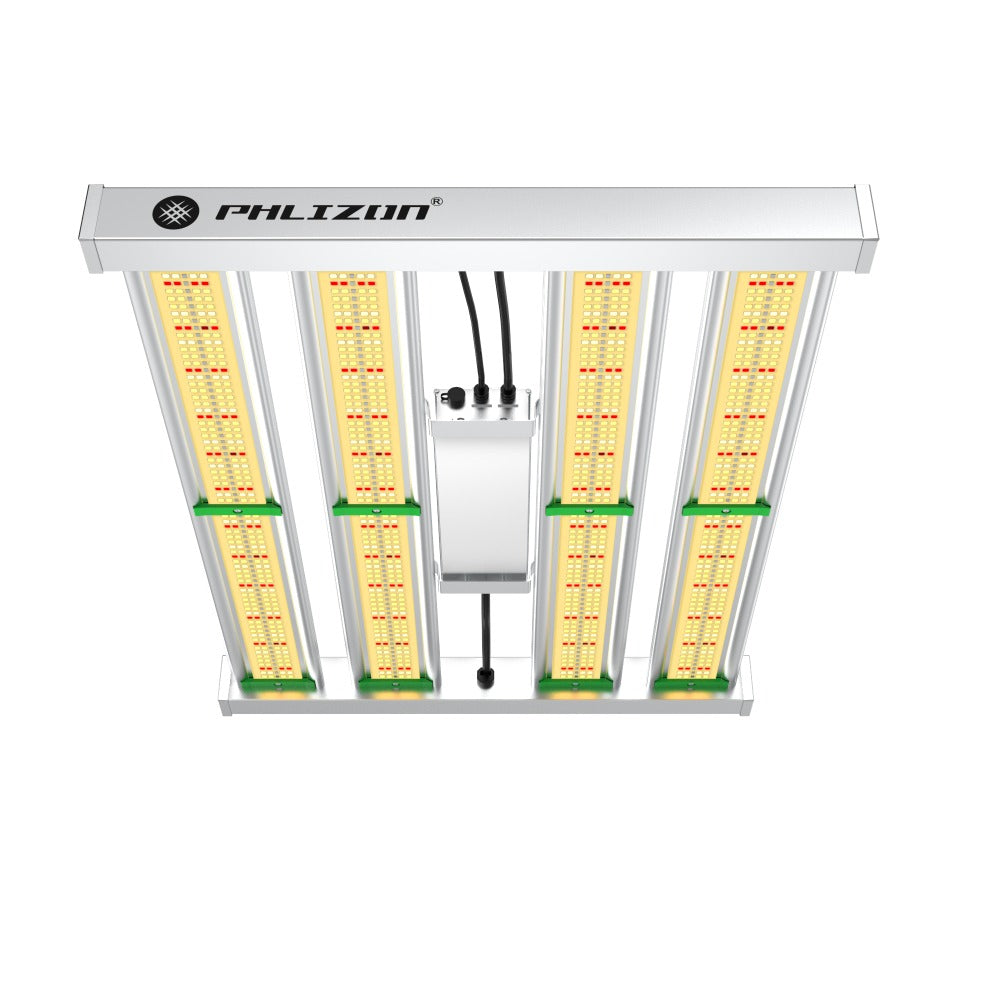Menu
Advantages of House Plant LED Grow Lights
Buy 2pcs+ Get 10% OFF
Full Spectrum.
380nm-740nm, targeted light spectrum to keep indoor plants vigorous all year round.
Higher Yield.
High light intensity penetrates the canopy and increases the density of buds for a bumper crop.
Lower Heat.
LED grow lights produce less heat than traditional grow lights, reducing the need for additional cooling and helping to keep your grow room at the optimal temperature for your plants.
Longer Lifespan.
ETL/DLC certificated, more than 100000 hours lifespan. Longer service life than HPS grow lights.
QB LED Grow Lights
Discover PHLIZON's top-of-the-line LED Grow Lights - the PL-1000, PL-2000, and PL-4500. Each model is equipped with high-efficiency Samsung LM281B LEDs, offering full-spectrum, dimmable lighting that caters to all stages of plant growth. With exceptional power output, remarkable lifespan, and innovative features like multi-light dimming and daisy chain setup, PHLIZON grow lights provide high-intensity, uniform coverage. Prioritizing safety, all models feature water-resistant LED panels and UL-listed waterproof drivers. Whether you're a hobbyist or professional grower, choose PHLIZON for a sustainable, efficient indoor gardening solution.
PHLIZON PL4500 450W Full-spectrum UV/IR Dual-channel Daisy Chain Dimmable Cost-effective High-yield Commercial LED Grow Light for 3×3FT
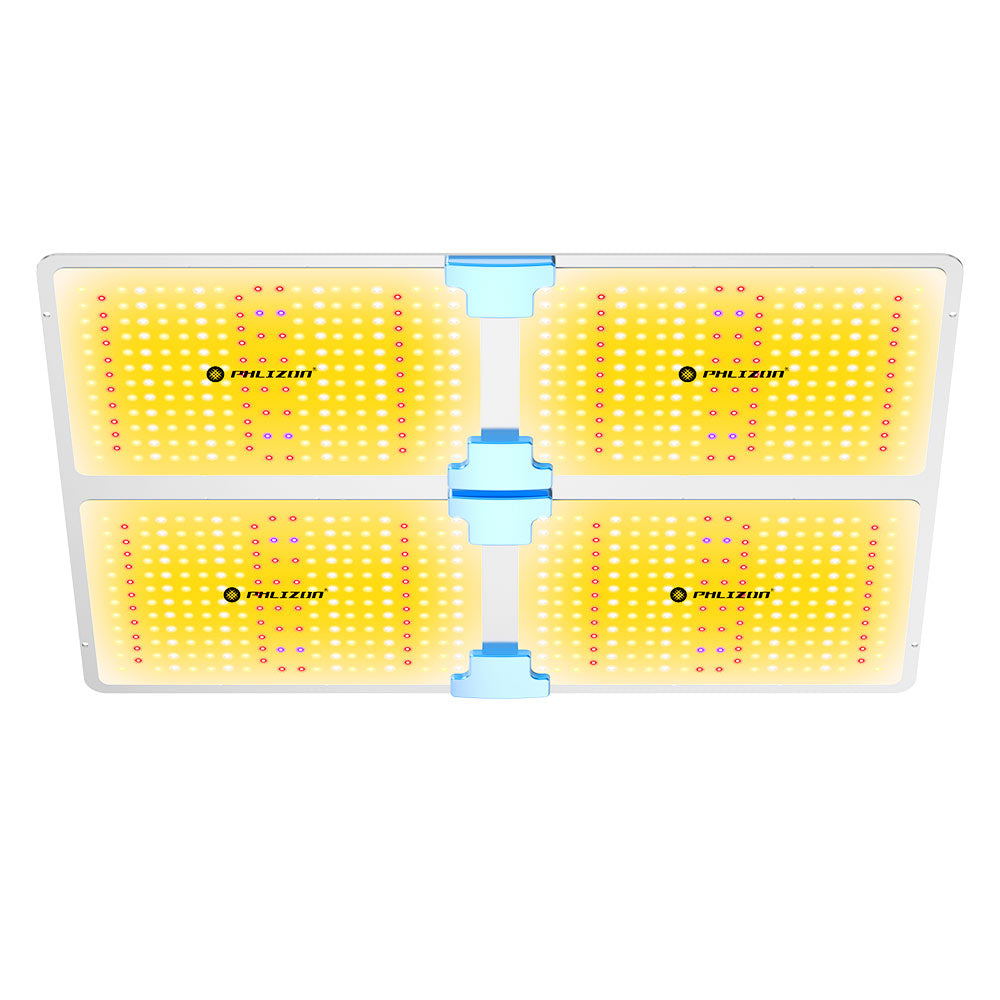
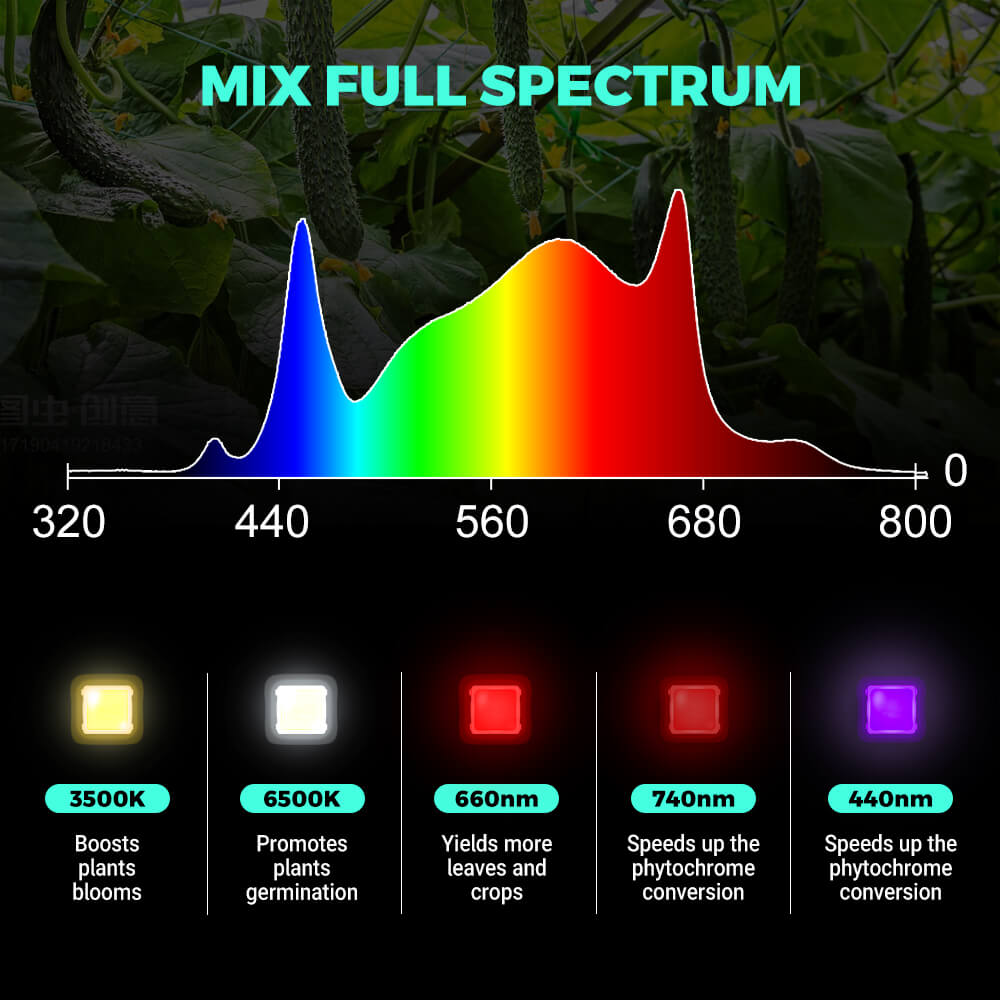


PHLIZON PL4500 450W Full-spectrum UV/IR Dual-channel Daisy Chain Dimmable Cost-effective High-yield Commercial LED Grow Light for 3×3FT
- Price
- US$239.99
PHLIZON PL1000 100W Full-spectrum Dimmable QB LED Grow Light (no daisy chain)
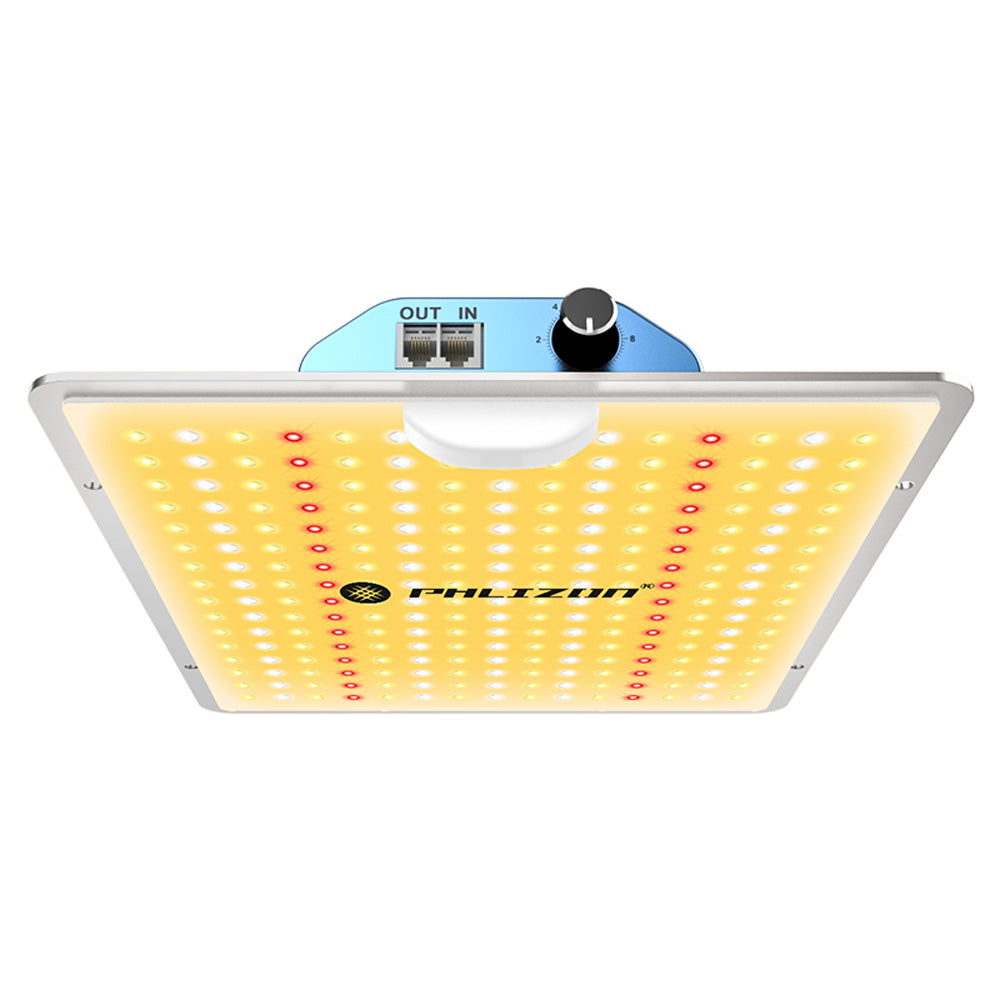
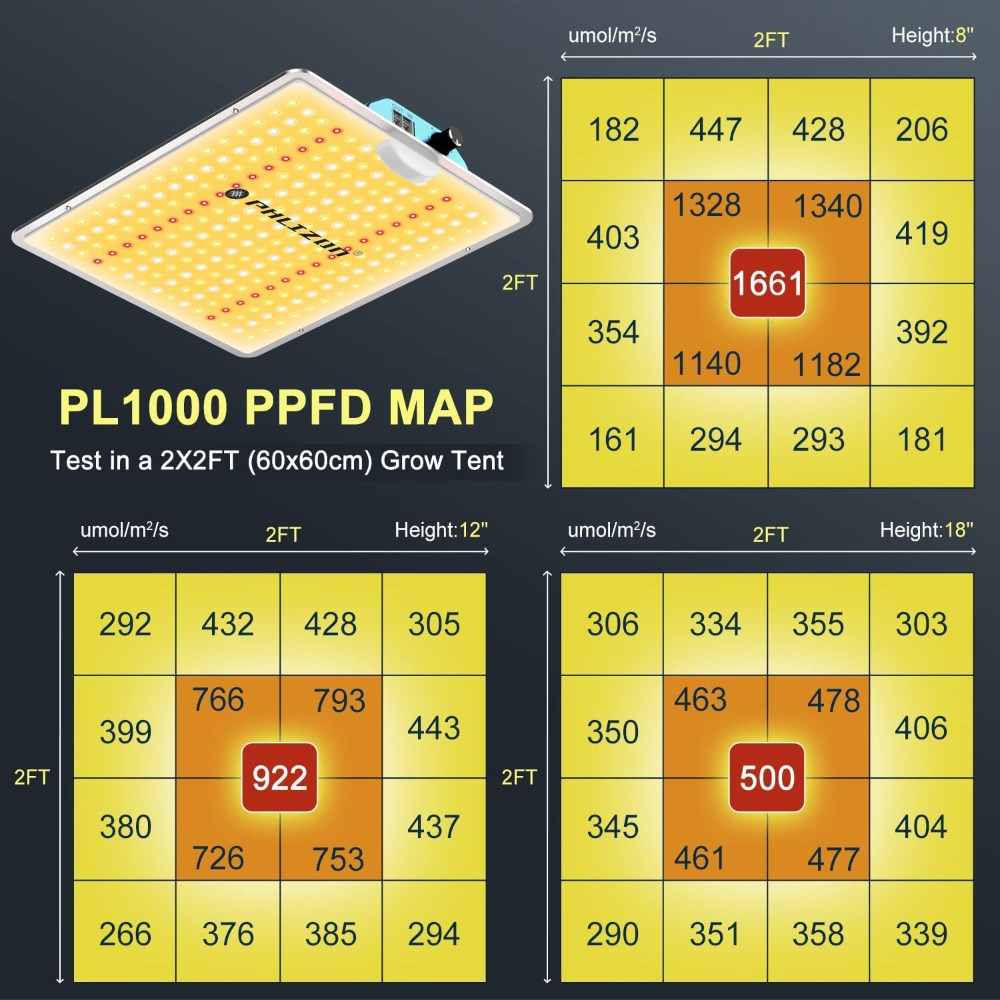


PHLIZON PL1000 100W Full-spectrum Dimmable QB LED Grow Light (no daisy chain)
- Price
- US$129.99
PHLIZON PL2000 200W Full-spectrum+UV/IR Daisy Chain Dimmable Cost-effective High-yield Commercial LED Grow Light for 2×2FT
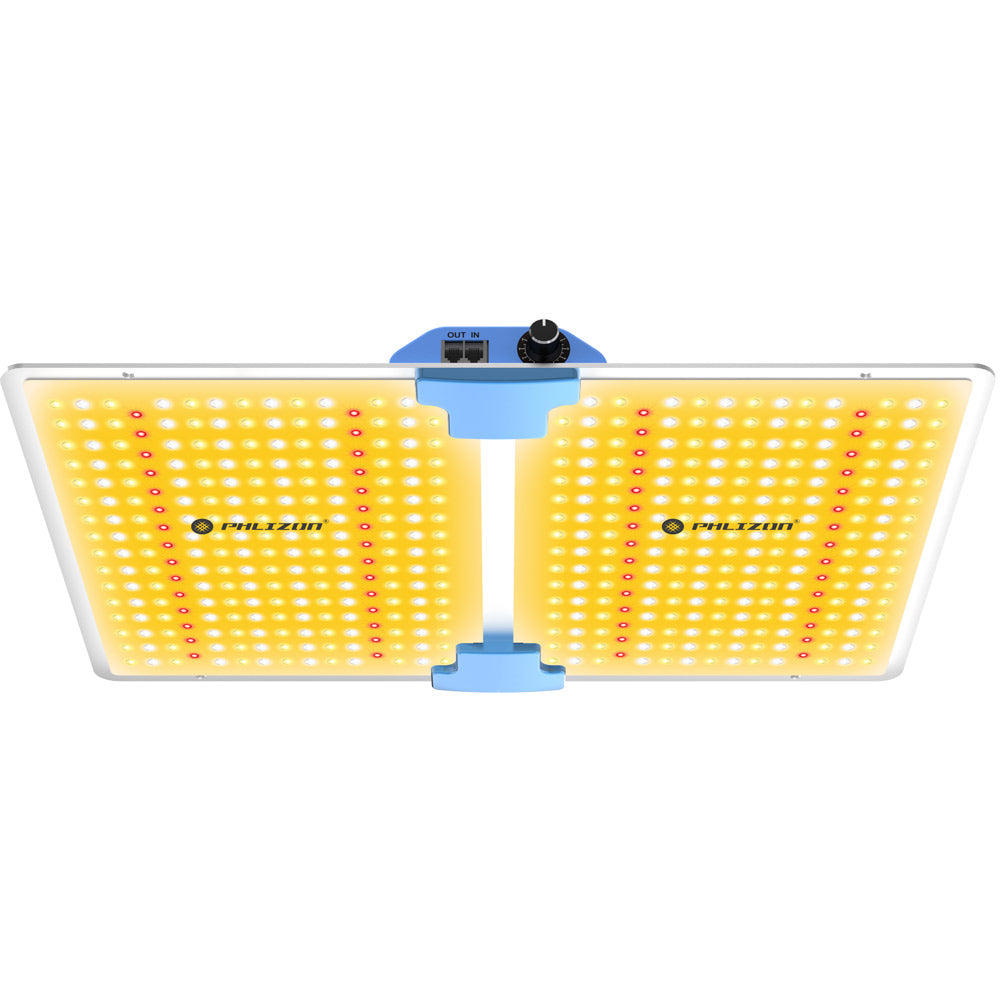
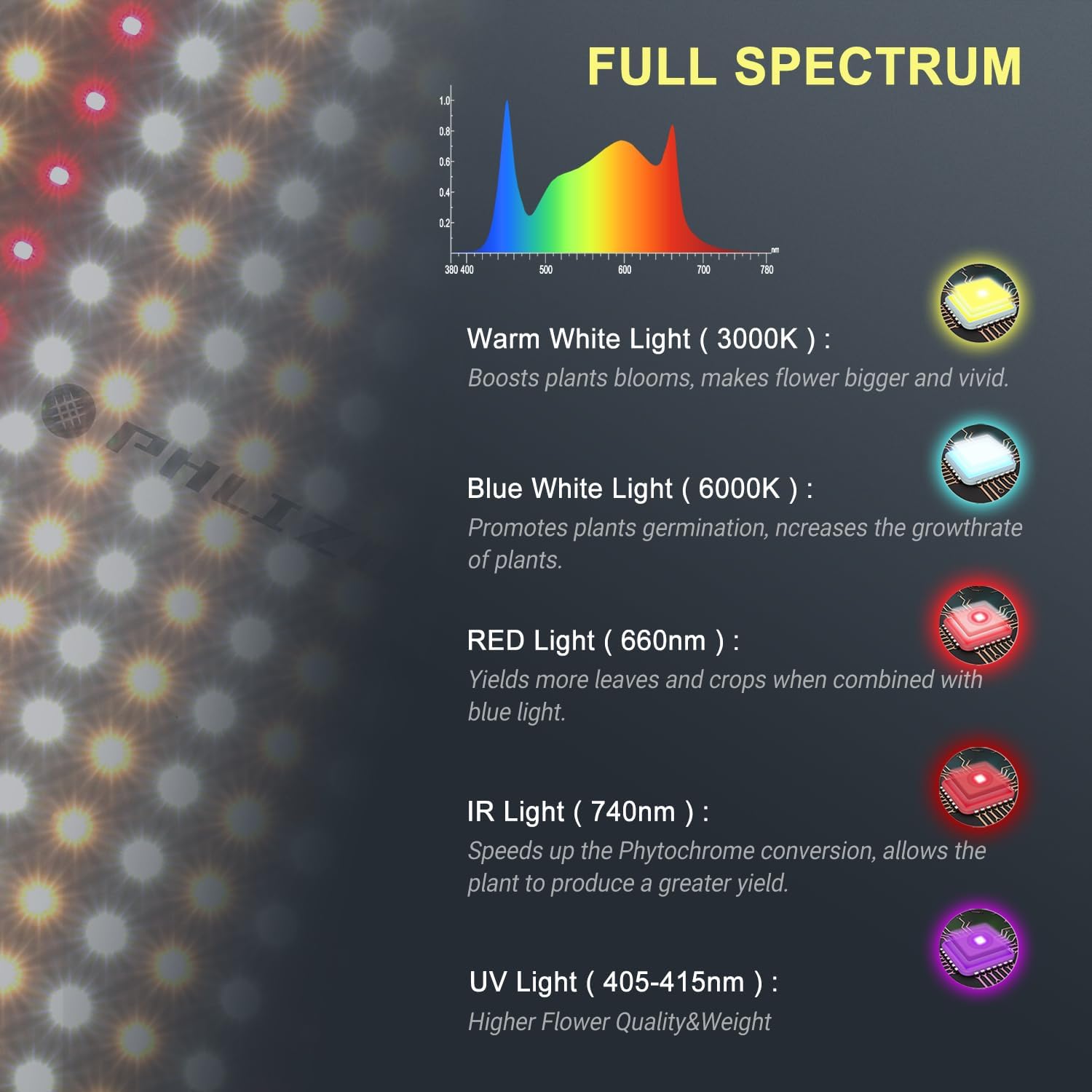


PHLIZON PL2000 200W Full-spectrum+UV/IR Daisy Chain Dimmable Cost-effective High-yield Commercial LED Grow Light for 2×2FT
- Price
- US$129.99
PHLIZON PL3000 300W Full-spectrum Daisy Chain Dimmable QB LED Grow Light with UVIR LED
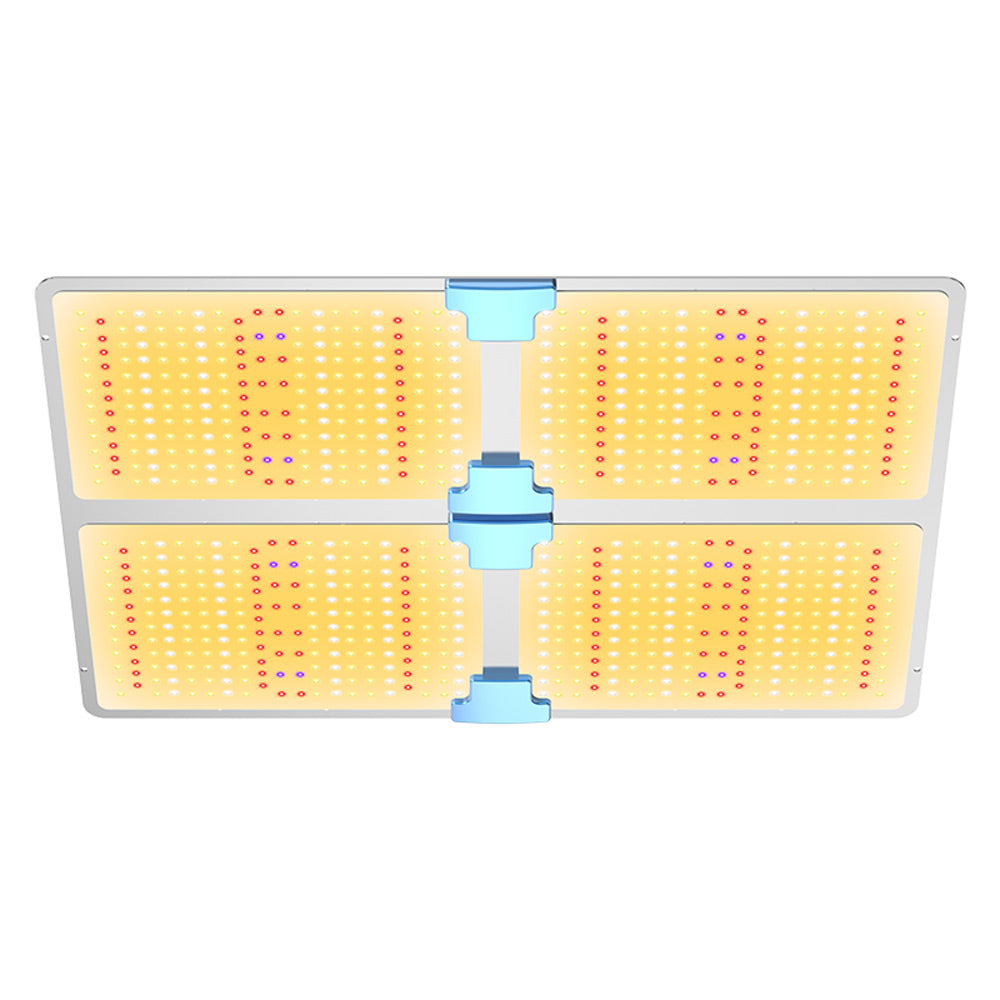
Sold out

PHLIZON PL3000 300W Full-spectrum Daisy Chain Dimmable QB LED Grow Light with UVIR LED
- Price
- US$179.99
What Are Grow Lights?
Grow lights are artificial light sources designed to mimic natural sunlight and provide plants with the necessary light energy for plant growth. They are commonly used in indoor gardening and hydroponics to provide the necessary light spectrum for photosynthesis. Grow lights can be used to supplement natural sunlight or as the sole light source for plants in environments with limited access to sunlight. They come in various types, including fluorescent, LED, and high-intensity discharge (HID) lights, each offering different benefits and light spectrums tailored to different stages of plant growth.
Why LED Grow Lights for Houseplants?
LED grow lights are energy-efficient lights used by indoor and greenhouse farmers and Cannabis growers too. Used as either a sole light source (indoor) or supplementary (greenhouses), LEDs help plants grow using full-spectrum lighting at a lower cost than traditional HPS lamps. Many growers take advantage of LED lights to help scale plant production due to their full light spectrum capabilities, low heat waste and maintenance, and extended lifespan. And given a plant’s physiology and morphology are strongly affected by specific spectrums, LED grow lights can efficiently promote growth in crops at specific times in the growth cycle.
Scientists and plant biologists agree that LED lighting is one of the best artificial lighting options available. Plants of all kinds, including vegetables, flowers, and herbs, respond well to LED lighting during all phases of growth, from the seedling stage to maturity. LEDs emit high quality lighting that plants thrive in. "Light quality" refers to the color of light. Because LED lighting comes in a wide range of colors, it can mimic sunlight more accurately than other artificial lights. You can also adjust the color to enhance growth during specific stages, which may result in bigger and healthier plants.
Benefits of LED Grow Lights
Compared to fluorescent grow lights, LED Grow Lights use less energy. LEDs put off very little heat compared to other bulb technologies. LEDs last longer than many other lighting technologies. These bulbs optimize the seeds and greens stages of growth with a balanced red:blue light spectrum that appears white to the eye. These bulbs give your vegetation optimal light for flowering and fruit production with a red light spectrum that appears white to the eye. Compared to other grow lights, our light appears pleasing and natural so you can display it anywhere in your home.
Energy efficiency is one of the biggest benefits of LEDs. In the long run, LEDs are a lot more cost efficient because they use less electricity and don't need to be replaced as often as other types of bulbs. LEDs produce far less heat than traditional types of grow lights. Generating less heat is beneficial for several reasons. You won’t have to waste energy adjusting the temperature of your grow room because of hot lights. Less heat also means your plants will require less frequent watering, which prevents waste.
How to Use LED Grow Lights Effectively
Adding a grow light to your plant setup will help your indoor plants thrive. Here's what you need to know about grow lights before you get started. Place grow lights within a foot of the plant. Give plants at least 12 to 14 hours of supplemental artificial lighting; do not run them around the clock. Plants need a daily rest cycle. A high-quality, full-spectrum grow light, when used correctly, can substitute for sunlight.
If a plant is getting no supplemental sunlight, the plant might need about 16 to 18 hours under the grow lights, depending on the plant's light requirements (low-light vs. high-light plants). Indoor plants require more light than most homeowners realize, and lacking natural light is an all-too-common houseplant ailment.
Aim to place your LED grow lights six to 12 inches from your plants. This will give your plants the right amount of light without overheating them. Turn your lights off about eight hours per day. As a general rule of thumb, you’ll want to use your LED lights for growing about 12-16 hours each day. Don’t be afraid to change your light set up.
FAQ
Can I use regular LED lights instead of grow lights for my houseplants?
Regular LED lights can provide some light to your plants and might help them survive in low-light conditions, but they’re not ideal for optimal growth. Unlike grow lights, regular LEDs aren’t designed to emit the specific wavelengths (like red and blue) that plants need for photosynthesis. If you’re just supplementing light for a low-light plant, they might work, but for thriving houseplants, a full-spectrum LED grow light is a better choice.
How long should I leave my LED grow lights on?
Most houseplants need 12 to 16 hours of light per day, depending on their needs. High-light plants like succulents might lean toward the higher end, while low-light plants like pothos can do fine with less. Always give your plants at least 8 hours of darkness to rest—leaving lights on 24/7 can stress them out and hinder growth.
How far should I place the LED grow light from my plants?
It depends on the wattage and your plant’s growth stage, but generally, keep LED grow lights 6 to 12 inches above your plants. Seedlings might need a bit more distance (up to 24 inches) to avoid burning, while mature plants can handle closer proximity.
Do all houseplants need grow lights?
No, it depends on your home’s natural light and the plant’s requirements. If you’ve got bright, sunny windows, plants like snake plants or ZZ plants might not need extra help. But in dim spaces or during winter, grow lights can make a huge difference, especially for light-hungry species like fiddle leaf figs or herbs.
Are LED grow lights safe for humans and pets?
Yes, when used properly. They don’t emit harmful UV rays like some older grow lights, and they stay cool, reducing burn risks. However, staring directly at bright LEDs isn’t great for your eyes, so avoid that. For pets, just ensure cords are out of reach—standard safety stuff.
Featured blog
- Choosing a selection results in a full page refresh.
